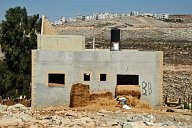Refine search
No keyword found to refine search
keywords EN
Places
Names
20 documents found
| 1 |
Documents per page :
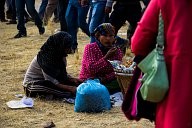
2018, Jan 15 - Maghi festival. New Year of Nepal in Tundikhel through the day. The festival had started from Kathmandu Durbar Square.
Noémie Repetto / Le Pictorium
LePictorium_0173463.jpg
Maghe Sankranti is the first day of the month of Magh of Bikram Sambat. Magh is the tenth month of the year.
Sankranti is the Sanskrit word in Eastern Astrology which refers to the transmigration of the Sun from one Rashi (sign of the zodiac) to another. In very simple, the word sankranti is the first day of the Nepali calendar. Then obviously, there are 12 sankrantis in a year. Makar Sankranti is the transition of the Sun from Dhanu rashi (Sagittarius) to Makara rashi (Capricorn).
In Hindu Astrology the sun position during the year is divided into 12 rashis (zodiac signs). It is however, very difficult to reconcile among Bikram Sambat months, Zodiac months and lunar calendar's months. While the traditional Calendar is based on lunar positions, Sankranti is a solar event. So dates of all Hindu festivals keep changing as per the Gregorian calendar and so do the Makar Sankranti too.
Makar Sankranti is the festival of the Sun God. The Sun God is the symbol of power, divinity and wisdom. The Sun God is worshiped in this festival.
Maghe Sankranti is also called Maghi. Maghi is for the New year of Tharu Community of Nepal.
Sankranti is the Sanskrit word in Eastern Astrology which refers to the transmigration of the Sun from one Rashi (sign of the zodiac) to another. In very simple, the word sankranti is the first day of the Nepali calendar. Then obviously, there are 12 sankrantis in a year. Makar Sankranti is the transition of the Sun from Dhanu rashi (Sagittarius) to Makara rashi (Capricorn).
In Hindu Astrology the sun position during the year is divided into 12 rashis (zodiac signs). It is however, very difficult to reconcile among Bikram Sambat months, Zodiac months and lunar calendar's months. While the traditional Calendar is based on lunar positions, Sankranti is a solar event. So dates of all Hindu festivals keep changing as per the Gregorian calendar and so do the Makar Sankranti too.
Makar Sankranti is the festival of the Sun God. The Sun God is the symbol of power, divinity and wisdom. The Sun God is worshiped in this festival.
Maghe Sankranti is also called Maghi. Maghi is for the New year of Tharu Community of Nepal.
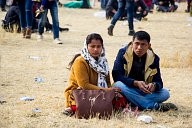
2018, Jan 15 - Maghi festival. New Year of Nepal in Tundikhel through the day. The festival had started from Kathmandu Durbar Square.
Noémie Repetto / Le Pictorium
LePictorium_0173467.jpg
Maghe Sankranti is the first day of the month of Magh of Bikram Sambat. Magh is the tenth month of the year.
Sankranti is the Sanskrit word in Eastern Astrology which refers to the transmigration of the Sun from one Rashi (sign of the zodiac) to another. In very simple, the word sankranti is the first day of the Nepali calendar. Then obviously, there are 12 sankrantis in a year. Makar Sankranti is the transition of the Sun from Dhanu rashi (Sagittarius) to Makara rashi (Capricorn).
In Hindu Astrology the sun position during the year is divided into 12 rashis (zodiac signs). It is however, very difficult to reconcile among Bikram Sambat months, Zodiac months and lunar calendar's months. While the traditional Calendar is based on lunar positions, Sankranti is a solar event. So dates of all Hindu festivals keep changing as per the Gregorian calendar and so do the Makar Sankranti too.
Makar Sankranti is the festival of the Sun God. The Sun God is the symbol of power, divinity and wisdom. The Sun God is worshiped in this festival.
Maghe Sankranti is also called Maghi. Maghi is for the New year of Tharu Community of Nepal.
Sankranti is the Sanskrit word in Eastern Astrology which refers to the transmigration of the Sun from one Rashi (sign of the zodiac) to another. In very simple, the word sankranti is the first day of the Nepali calendar. Then obviously, there are 12 sankrantis in a year. Makar Sankranti is the transition of the Sun from Dhanu rashi (Sagittarius) to Makara rashi (Capricorn).
In Hindu Astrology the sun position during the year is divided into 12 rashis (zodiac signs). It is however, very difficult to reconcile among Bikram Sambat months, Zodiac months and lunar calendar's months. While the traditional Calendar is based on lunar positions, Sankranti is a solar event. So dates of all Hindu festivals keep changing as per the Gregorian calendar and so do the Makar Sankranti too.
Makar Sankranti is the festival of the Sun God. The Sun God is the symbol of power, divinity and wisdom. The Sun God is worshiped in this festival.
Maghe Sankranti is also called Maghi. Maghi is for the New year of Tharu Community of Nepal.
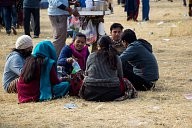
2018, Jan 15 - Maghi festival. New Year of Nepal in Tundikhel through the day. The festival had started from Kathmandu Durbar Square.
Noémie Repetto / Le Pictorium
LePictorium_0173468.jpg
Maghe Sankranti is the first day of the month of Magh of Bikram Sambat. Magh is the tenth month of the year.
Sankranti is the Sanskrit word in Eastern Astrology which refers to the transmigration of the Sun from one Rashi (sign of the zodiac) to another. In very simple, the word sankranti is the first day of the Nepali calendar. Then obviously, there are 12 sankrantis in a year. Makar Sankranti is the transition of the Sun from Dhanu rashi (Sagittarius) to Makara rashi (Capricorn).
In Hindu Astrology the sun position during the year is divided into 12 rashis (zodiac signs). It is however, very difficult to reconcile among Bikram Sambat months, Zodiac months and lunar calendar's months. While the traditional Calendar is based on lunar positions, Sankranti is a solar event. So dates of all Hindu festivals keep changing as per the Gregorian calendar and so do the Makar Sankranti too.
Makar Sankranti is the festival of the Sun God. The Sun God is the symbol of power, divinity and wisdom. The Sun God is worshiped in this festival.
Maghe Sankranti is also called Maghi. Maghi is for the New year of Tharu Community of Nepal.
Sankranti is the Sanskrit word in Eastern Astrology which refers to the transmigration of the Sun from one Rashi (sign of the zodiac) to another. In very simple, the word sankranti is the first day of the Nepali calendar. Then obviously, there are 12 sankrantis in a year. Makar Sankranti is the transition of the Sun from Dhanu rashi (Sagittarius) to Makara rashi (Capricorn).
In Hindu Astrology the sun position during the year is divided into 12 rashis (zodiac signs). It is however, very difficult to reconcile among Bikram Sambat months, Zodiac months and lunar calendar's months. While the traditional Calendar is based on lunar positions, Sankranti is a solar event. So dates of all Hindu festivals keep changing as per the Gregorian calendar and so do the Makar Sankranti too.
Makar Sankranti is the festival of the Sun God. The Sun God is the symbol of power, divinity and wisdom. The Sun God is worshiped in this festival.
Maghe Sankranti is also called Maghi. Maghi is for the New year of Tharu Community of Nepal.
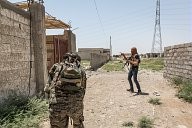
SYRIE / The Freedom Katiba against RAQQA / LIWA AL TAHRIR
Chris Huby / Le Pictorium
LePictorium_0165310.jpg
Syria / Raqqa / West District / Hawi al-Hawa / Frontline. Two Arab fighters are preparing to enter a house.
Several Arab groups of the SDF (Syrian Democratic Forces) are installed in houses taken over in Daesh. This unit belongs to Liwa Al-Tharir, a brigade of Arab fighters who decided to fight with the fanatics of the EI.
Several Arab groups of the SDF (Syrian Democratic Forces) are installed in houses taken over in Daesh. This unit belongs to Liwa Al-Tharir, a brigade of Arab fighters who decided to fight with the fanatics of the EI.
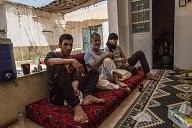
SYRIE / The Freedom Katiba against RAQQA / LIWA AL TAHRIR
Chris Huby / Le Pictorium
LePictorium_0165322.jpg
Syria / Raqqa / West District / Hawi al-Hawa / Frontline. Atmosphere in the house, the Arab fighters are busy waiting for the new orders that will arrive.
Several Arab groups of the SDF (Syrian Democratic Forces) are installed in houses taken over in Daesh. This unit belongs to Liwa Al-Tharir, a brigade of Arab fighters who decided to fight with the fanatics of the EI.
Several Arab groups of the SDF (Syrian Democratic Forces) are installed in houses taken over in Daesh. This unit belongs to Liwa Al-Tharir, a brigade of Arab fighters who decided to fight with the fanatics of the EI.
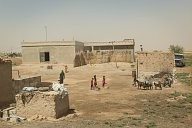
SYRIA / ROJAVA / RAQQA IS BLEEDING - WRATH OF THE EUPHRATE June/July 2017
Chris Huby / Le Pictorium
LePictorium_0164804.jpg
July 2017 - Syria / ROJAVA (Northern Syria) / Road to Raqqa / On the road, many small peasant villages expose themselves to the sun. Here, a family of Bedouins with many children are out in the day.
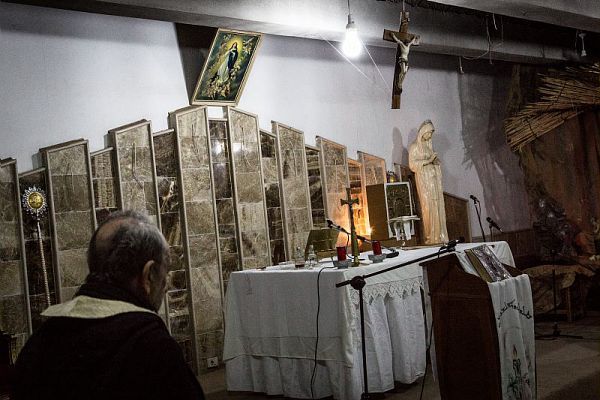
SYRIA - THE MARTYRDOM OF KHABOUR'S ASSYRIANS
Chris Huby / Le Pictorium
LePictorium_0159703.jpg
SYRIA / NORTH OF SYRIA / HASSAKE / December 2016 - Syrian Kurdistan (Rojava) - Hassake - 6 churches area - Syriak church - a monk is praying at the end of the day.
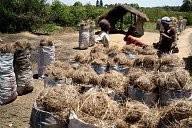
Life around lake Alaotra, Madagascar
Arnaud De Grave / Le Pictorium
LePictorium_0151257.jpg
Charcoal sellers beside the national road.
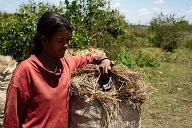
Life around lake Alaotra, Madagascar
Arnaud De Grave / Le Pictorium
LePictorium_0151258.jpg
Charcoal sellers beside the national road.
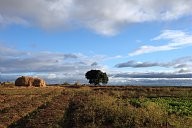
Around the Alaotra lake, Madagascar
Arnaud De Grave / Le Pictorium
LePictorium_0150709.jpg
Farming land around the Alaotra lake.
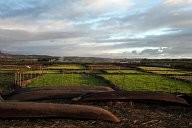
Around the Alaotra lake, Madagascar
Arnaud De Grave / Le Pictorium
LePictorium_0150711.jpg
Pirogues and agriculture around the Alaotra lake.
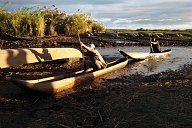
Around the Alaotra lake, Madagascar
Arnaud De Grave / Le Pictorium
LePictorium_0150713.jpg
Fishermen.

Oblast Arkhanglesk, in Russia...
Arnaud De Grave / Le Pictorium
LePictorium_0148751.jpg
One of Menshakovskaya's inhabitant came back to the village to try and work the familly farm. However it is very hard because of the conditions and the lack of governmental support.
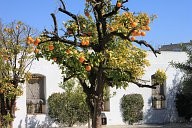
Andalucia,Spain
Sandrine Huet / Le Pictorium
LePictorium_0140304.jpg
School and museum of equestrian art in Jerez de la Frontera
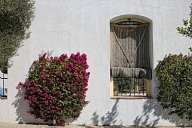
Andalucia,Spain
Sandrine Huet / Le Pictorium
LePictorium_0140617.jpg
School and museum of equestrian art in Jerez de la Frontera
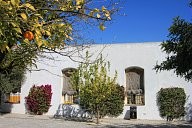
Andalucia,Spain
Sandrine Huet / Le Pictorium
LePictorium_0140618.jpg
School and museum of equestrian art in Jerez de la Frontera

Underwater logging in Lago Bayano, Panama
Arnaud De Grave / Le Pictorium
LePictorium_0133375.jpg
Hunting for appropriate trees. Some of the barges are autonomous, equipped with an engine.

Gotland, Vikings island.
Laurent Paillier / Le Pictorium
LePictorium_0133005.jpg
A barn with a thatched roof in the crop.


